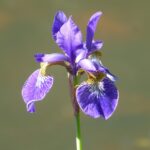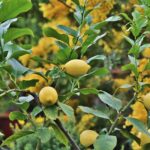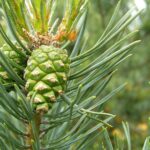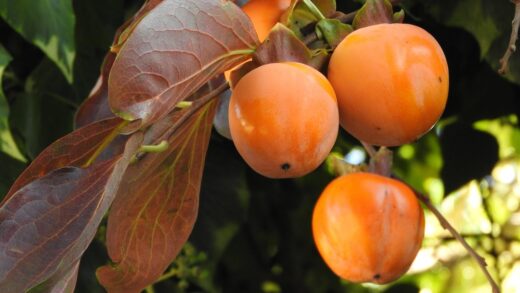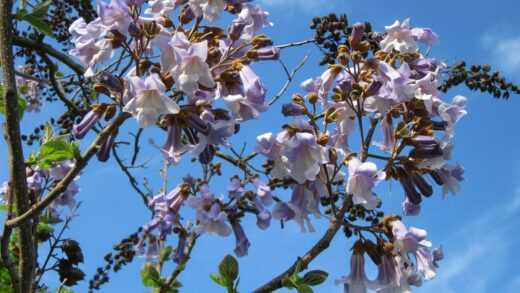To achieve a truly spectacular floral display, bellflowers rely on a steady supply of essential nutrients from the soil, which act as the building blocks for healthy growth, strong stems, and vibrant blooms. While many species are not excessively demanding feeders, a well-balanced approach to fertilization can make a significant difference in their overall performance and resilience. The key is to provide nutrients in a way that supports the plant’s natural growth cycle, avoiding the pitfalls of both nutrient deficiency and over-fertilization, either of which can lead to poor results. Understanding the role of key nutrients and the best methods and times for their application is fundamental to unlocking the full potential of these charming garden perennials. This chapter will explore the specifics of feeding bellflowers for optimal health and flowering.
The foundation of good plant nutrition is not a fertilizer bag, but rather a healthy, fertile soil. Before considering any supplemental feeding, the first and most important step is to enrich the soil with organic matter. Incorporating generous amounts of well-rotted compost, leaf mold, or aged manure into the garden bed before planting provides a complex and slow-releasing source of essential macro and micronutrients. Organic matter also dramatically improves soil structure, which in turn enhances the soil’s ability to hold onto nutrients and make them available to the plant’s roots. A soil that is rich in organic material will often provide most, if not all, of the nutrients a bellflower needs for the entire season, reducing the need for chemical fertilizers.
For most bellflower varieties grown in reasonably fertile garden soil, a minimal approach to supplemental fertilization is often the most successful. A single application of a balanced, slow-release granular fertilizer in the early spring, just as new growth is emerging, is typically sufficient for the entire year. A fertilizer with an N-P-K ratio such as 5-10-5 or 10-10-10 is a good choice, as it provides a good balance of nitrogen for leafy growth, phosphorus for root and flower development, and potassium for overall plant vigor and disease resistance. This should be sprinkled lightly on the soil surface around the base of the plant, avoiding direct contact with the crown, and then gently worked into the top layer of soil before being watered in.
It is crucial to avoid the temptation to over-fertilize bellflowers, as this can be more detrimental than not fertilizing at all. An excess of nitrogen, in particular, can stimulate a great deal of lush, soft, leafy growth at the expense of flowers. This weak growth is also more susceptible to attack from pests like aphids and to fungal diseases. Over-fertilization can also lead to the buildup of salts in the soil, which can damage the plant’s roots and interfere with water uptake. The signs of over-fertilization can include weak, leggy stems, sparse flowering, and yellowing or browning of the leaf margins. It is always better to err on the side of caution and provide too little fertilizer rather than too much.
For bellflowers grown in containers or in particularly poor, sandy soils, a slightly different feeding regimen may be necessary. The limited soil volume in pots means that nutrients are depleted more quickly through plant uptake and leaching from regular watering. For these plants, a liquid fertilizer applied at half-strength every two to four weeks during the active growing and flowering season can be beneficial. A liquid feed formulated for flowering plants, often referred to as a “bloom booster,” which has a higher proportion of phosphorus, can be particularly effective at promoting a continuous display of flowers. It is important to cease all feeding in late summer to allow the plants to prepare for winter dormancy.
More articles on this topic
Understanding essential nutrients
To effectively fertilize any plant, including the bellflower, it is helpful to have a basic understanding of the primary nutrients they require and the roles these elements play in the plant’s life processes. The three most important nutrients, often referred to as macronutrients, are nitrogen (N), phosphorus (P), and potassium (K), and their percentages are always listed in that order on fertilizer packaging. Nitrogen is the key component for vegetative growth, responsible for the development of lush, green leaves and strong stems. A sufficient supply of nitrogen is essential for the plant to build the framework necessary to support a healthy display of flowers.
Phosphorus (P) plays a critical role in several fundamental plant processes, most notably in energy transfer, root development, and the formation of flowers, fruits, and seeds. A strong and extensive root system is the foundation of a healthy plant, and phosphorus is vital for its establishment. For bellflowers, an adequate supply of phosphorus is directly linked to the quality and quantity of blooms. This is why fertilizers formulated for flowering plants often have a higher middle number (P) in their N-P-K ratio, as it specifically encourages the plant to direct its energy into reproductive growth, meaning more and bigger flowers.
Potassium (K), the third primary macronutrient, is essential for the overall vigor and resilience of the plant. It plays a crucial role in regulating the plant’s internal processes, including water movement, photosynthesis, and carbohydrate metabolism. A plant with sufficient potassium is better able to withstand environmental stresses such as drought, heat, and cold. Furthermore, potassium strengthens the plant’s cell walls, making it more resistant to fungal diseases and insect attacks. It is, in essence, the nutrient that contributes to the overall toughness and good health of the bellflower, ensuring it can not only grow and flower but also defend itself against common garden adversities.
Beyond these three macronutrients, bellflowers also require a range of secondary nutrients, such as calcium, magnesium, and sulfur, as well as a host of micronutrients, or trace elements, like iron, manganese, and boron. While these are needed in much smaller quantities, a deficiency in any one of them can still lead to poor growth and health problems. The good news for the gardener is that a healthy soil rich in organic matter, such as compost, typically contains a full spectrum of these essential secondary and micronutrients. This is another primary reason why focusing on building great soil is a more sustainable and effective long-term strategy than relying solely on chemical fertilizers.
More articles on this topic
Organic versus synthetic fertilizers
When choosing a fertilizer for bellflowers, gardeners have a choice between organic and synthetic options, each with its own set of characteristics, benefits, and drawbacks. Organic fertilizers are derived from natural, once-living materials, such as compost, aged animal manures, bone meal, blood meal, and kelp meal. These materials release their nutrients slowly, as they must first be broken down by microorganisms in the soil. This slow-release nature provides a gentle, steady supply of nutrients that is less likely to burn plant roots or cause the kind of weak, excessive growth associated with over-fertilization.
A significant advantage of organic fertilizers is that they do more than just feed the plant; they also feed the soil. The application of organic materials adds to the soil’s structure, improves its water-holding capacity, and fosters a diverse and healthy ecosystem of beneficial soil microbes. This holistic approach builds long-term soil fertility, creating a more sustainable and resilient garden environment. While the nutrient concentrations in organic fertilizers are generally lower than in their synthetic counterparts, their contribution to overall soil health provides benefits that extend far beyond simple plant nutrition.
Synthetic fertilizers, on the other hand, are manufactured chemical products that contain concentrated, water-soluble forms of plant nutrients. Their primary advantage is that these nutrients are immediately available for plant uptake, which can result in a rapid growth response. This can be useful for quickly correcting a specific nutrient deficiency or for providing a boost to heavy-feeding plants. They are also typically less expensive and more readily available than many organic options, and their precise nutrient ratios are clearly stated on the label, allowing for very specific application.
However, the use of synthetic fertilizers comes with several potential downsides. Because the nutrients are so readily available, it is very easy to over-apply them, which can burn plant roots and lead to the weak, leggy growth previously mentioned. The water-soluble nature of these chemicals also means they can easily leach out of the soil with heavy rain or irrigation, potentially contaminating groundwater. Furthermore, synthetic fertilizers do nothing to improve the physical structure or long-term health of the soil; they are purely a source of plant food and do not support the vital ecosystem of microorganisms that is the hallmark of a truly fertile garden soil.
Recognizing nutrient deficiencies
Although bellflowers are not typically prone to nutrient deficiencies, especially when grown in soil that is rich in organic matter, problems can occasionally arise, particularly in poor, sandy soils or in container plantings. Learning to recognize the visual cues of a deficiency can help a gardener to diagnose and correct the issue promptly. One of the most common deficiencies seen in plants is a lack of nitrogen. This typically manifests as a general yellowing, or chlorosis, of the older, lower leaves first. The overall growth of the plant will also be stunted and weak, as nitrogen is a mobile nutrient that the plant will move from older tissues to support new growth.
A phosphorus deficiency can be more subtle and difficult to diagnose. The most common symptom is stunted growth, and the leaves may take on a dull, dark green or even a purplish hue, particularly in young plants. Flowering will be significantly reduced or may fail to occur altogether. Because phosphorus is crucial for root development, a deficient plant will have a poor and underdeveloped root system, making it more susceptible to drought and other stresses. Correcting a phosphorus deficiency is often best achieved by incorporating a high-phosphorus source like bone meal or a superphosphate fertilizer into the soil.
Potassium deficiency often appears as a yellowing or browning along the margins and tips of the older, lower leaves, while the center of the leaf remains green. The plant may have weak stems and a generally low resistance to diseases. As with other mobile nutrients, the symptoms appear on the older foliage first as the plant relocates the available potassium to its newer growth. An application of a fertilizer containing potassium sulfate or simply ensuring the use of a balanced N-P-K fertilizer can usually rectify the problem.
Deficiencies in micronutrients are less common but can occur, especially in soils with a very high pH, which can make elements like iron and manganese unavailable to the plant. An iron deficiency typically causes interveinal chlorosis, where the leaves turn yellow but the veins remain green, and it noticeably affects the new, younger leaves first. This is because iron is an immobile nutrient in the plant. The best way to avoid all types of nutrient deficiencies is to focus on creating a healthy, living soil by regularly amending it with compost and other organic matter, which provides a balanced diet of all the essential elements a bellflower needs to thrive.
A seasonal feeding schedule
Developing a simple, seasonal feeding schedule can help to ensure that bellflowers receive the right nutrients at the right time to support their growth and flowering throughout the year. The fertilization calendar begins in the early spring, which is the most critical time for providing nutrients. As the new shoots emerge from the ground, the plant has a high demand for energy to fuel its rapid development of leaves and stems. This is the ideal time to apply a balanced, slow-release granular fertilizer, such as a 10-10-10 formula, or to top-dress the soil around the plant with a fresh layer of rich compost. This single application will provide a steady supply of nutrients for the coming months.
As spring progresses into early summer, the plant’s focus shifts from vegetative growth to the production of flower buds. During this pre-flowering period, the plant benefits from an adequate supply of phosphorus and potassium, which are essential for bloom development and overall plant vigor. The spring application of a balanced fertilizer should provide these nutrients, but if the soil is known to be poor, a supplementary feeding with a liquid fertilizer that is higher in phosphorus (a “bloom booster”) can be applied as the first buds begin to form. However, for plants in good soil, this is often unnecessary and can risk over-fertilization.
During the peak flowering period of summer, it is generally best to refrain from any further fertilization for bellflowers planted in the ground. The nutrients provided in the spring should be sufficient to carry them through the season. Continuing to feed, especially with a high-nitrogen fertilizer, can encourage the plant to produce more leaves at the expense of flowers and may even shorten the life of the existing blooms. The main focus during summer should be on providing consistent water and deadheading spent flowers, not on adding more nutrients. The exception to this rule is for plants grown in containers, which will benefit from regular liquid feeding every two to four weeks to replenish the nutrients leached from the potting soil.
In the late summer and autumn, all supplemental fertilization should cease completely. This is a crucial step in preparing the plant for winter. Adding fertilizer at this time can stimulate a new flush of tender growth that will not have sufficient time to harden off before the first frosts arrive. This vulnerable new growth is highly susceptible to winter damage, which can weaken the entire plant. Allowing the plant to slow down its growth naturally as the days shorten and temperatures cool is the best way to ensure it enters dormancy in a healthy and resilient state, ready to survive the winter and return with vigor the following spring.














